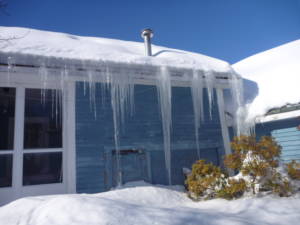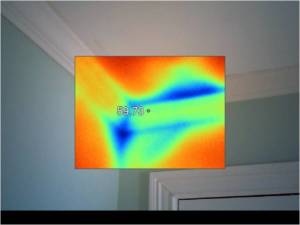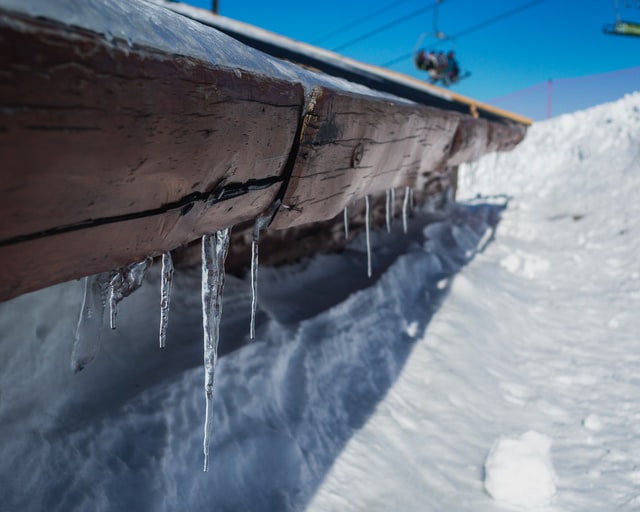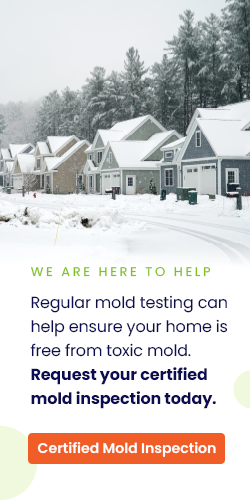Ice dams cause toxic mold in homes resulting in illness and property damage. Water back up behind the dams and leaks into a home resulting in property damage and toxic mold growth.

Ice dams usually occur after a heavy snowfall and several days of freezing temperatures. Warm air inside your home leaks into the attic and will warm the underside of the roof causing snow and ice on the roof to melt. The melted water will drain along the roof, under the snow, until it reaches the cold overhang. The overhang tends to be at the same temperature as the outdoors and the melted water will refreeze and form an ice dam and icicles. The ice dam can cause damage to the roof, which will result in water leaks to the inside. Frequently the result will be a water spot on the ceiling under the roof damage.
Prevent Burst Pipes From Damaging Your Home
Toxic Mold
The key problem caused by ice dams is the water and moisture that leaks into the home. Mold thrives on moisture and grows because it feeds on the materials that most homes are made of wood, drywall, wallpaper, carpet, ceiling tiles, etc. The final component required for mold growth is a temperature of 5 degrees to 38 degrees. As long as these three ingredients are present, mold will form and continue to grow provided it has food to feed on. This is the reason that the structural integrity of a home is compromised mold is essentially feeding on the home. Exposure to elevated levels of mold can cause respiratory issues such as allergies and hypersensitivity pneumonitis (HP), trigger asthma in some people, and some types of molds can even cause infections in people with a weakened immune system.

Solutions
Prevent ice dams by controlling heat loss from the building into the attic. Keep warm and moist air from entering the attic space from the interior of the building by sealing any air leakage pathways and being sure the attic is properly insulated. Exhaust appliances to outside of the building and not into the attic because condensation will form on the roof sheathing. Proper attic ventilation helps keep a uniform roof temperature. Clean and remove any obstructions in gutters before each snowfall to make sure any water can properly drain off the roof. Install heat cables on the roof’s edge to prevent ice from forming. When snow does arrive, safely removing it from a roof can help prevent the formation of ice dams.
What is Toxic Mold, and How Does it Cause Sickness?






